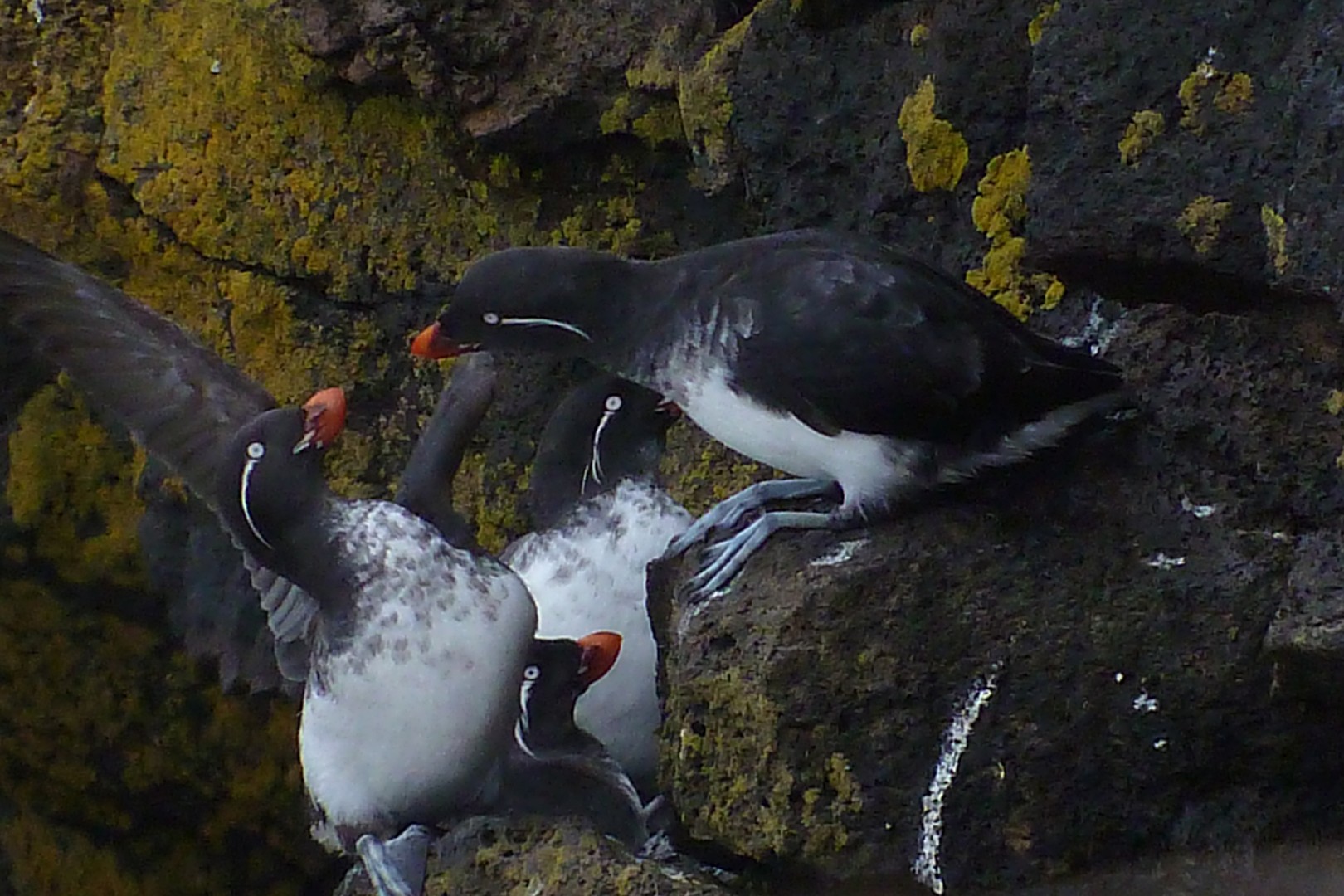Parakeet Auklet
A species of Typical auklets Scientific name : Aethia psittacula Genus : Typical auklets
Parakeet Auklet, A species of Typical auklets
Botanical name: Aethia psittacula
Genus: Typical auklets
Content
Description General Info
Description
The parakeet auklet is a small (23 cm) auk with a short orange bill that is upturned to give the bird its curious fixed expression. The upward bend of the beak has been observed to provide advantages in picking up small food pieces from the sea bottom as well as in assisting in the disintegration of larger food objects. The bird's plumage is dark above and white below. with a single white plume projecting back from the eye. There is a small amount of variation between breeding and winter plumage. The parakeet auklet is a highly vocal species at the nest, calling once it arrives at the nest and then duetting once its mate arrives. It makes a series of rhythmic hoarse calls (like that of the Cassin's auklet) and a quavering squeal. The function of these are unknown, but could be associated with defending its burrow from intruders and strengthening the bond with its mate. 
Size
25 cm (10 in)
Nest Placement
Burrow
Clutch Size
1 egg
Feeding Habits
Parakeet Auklet primarily consumes small fish, crustaceans, and various types of jellies including ctenophores. They forage by diving and propelling themselves underwater using their wings. Their diet includes lanternfish, rockfish, squid, copepods, euphausiids, and sea slugs, among other invertebrates.
Habitat
Parakeet Auklet's habitat spans marine environments of the North Pacific, from sea cliffs and rocky shores to deep offshore waters. They nest in protected sites such as crevices and boulders, favoring locations safe from introduced predators. Although they're solitary or found in small groups, they congregate where food is plentiful or for socializing along the coast.
Nest Behavior
Parakeet Auklet lays a single egg per season inside the burrow or indentation. The egg and subsequent chick receive care from both parents, with the nesting site selected for its protection from predators and exposure to the elements.
Nest Characteristics
Parakeet Auklet's nest is positioned in rock crevices, cliffs, caves, or between boulders by the seashore, often in pre-existing burrows. Without nesting material, the nest is just a slight ground depression, near the burrow's entrance, averaging 3.2 inches high and 4.4 inches wide.
Dite type
Aquatic invertebrate eater
General Info
Feeding Habits
Bird food type
Behavior
Parakeet Auklet engage in vibrant courtship upon spring arrival at nesting areas, with distinct males' whinnying calls and females' inspections leading to unified calling and billing to strengthen pair bonds. Mating, exclusively at sea, involves careful male threat displays to deter rivals. Their flights above potential nest sites often include a 'butterfly' display, though without flock formation. Nesting is relatively solitary compared to other auklets, with pairs keeping distance from others. Social monogamy is common, with many reuniting with previous mates. Before nest visits, they may congregate in small groups on shorelines, engaging in social interactions. Both genders contribute equally to incubation and chick-rearing. Fledged chicks independently venture to sea, generally under the cloak of night.
Species Status
The parakeet auklet is not considered threatened, there are estimated to be over a million individuals in the North Pacific. It is not thought to have declined recently, but may be threatened in the future by introduced predators and oil spills. 
Scientific Classification
Phylum
Chordates Class
Birds Order
Shorebirds Family
Alcidae Genus
Typical auklets Species
Parakeet Auklet 